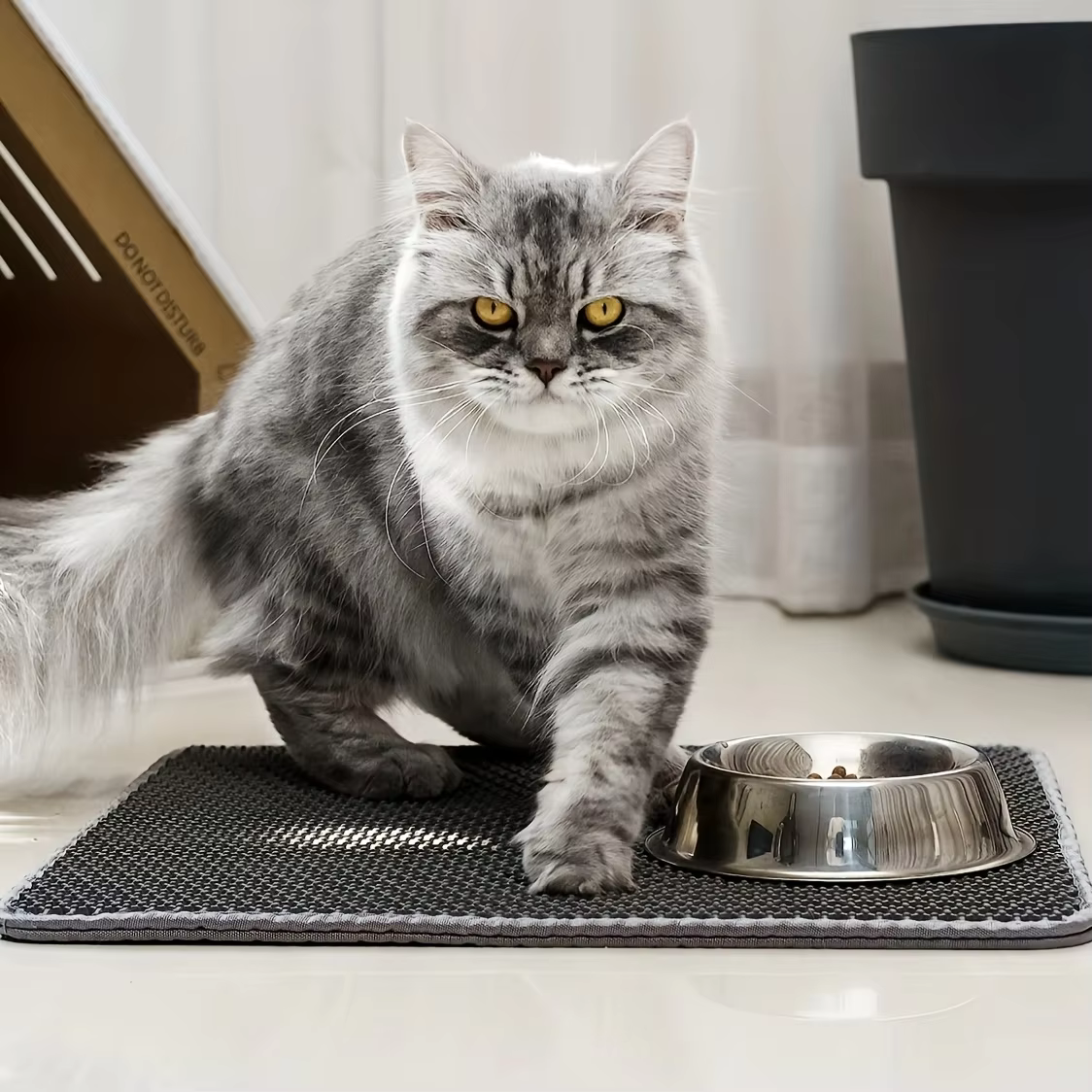Views: 0 Author: Site Editor Publish Time: 2025-07-25 Origin: Site








Maintaining a clean environment for your feline friend is essential for their health and happiness. A well-kept Cat Litter Mat not only ensures cleanliness but also enhances the overall hygiene of your home. In this guide, we'll delve into the best practices for cleaning and maintaining your cat litter mat, ensuring a comfortable space for both you and your pet.
A cat litter mat plays a crucial role in trapping litter particles that your cat may carry out of the litter box. Over time, these particles accumulate, making regular cleaning imperative. A clean mat prevents the spread of bacteria and odors, contributing to a healthier living environment.
Cats are meticulous creatures that prefer a clean area to do their business. A dirty litter mat can deter them from using the litter box, leading to unwanted behaviors. Regular maintenance ensures your cat remains comfortable and stress-free.
An unclean mat can harbor germs and allergens, affecting the health of household members. By keeping the mat clean, you minimize the risk of infections and maintain a fresh-smelling home.

Understanding the material of your cat litter mat is essential for proper cleaning. Different mats require specific care techniques to prolong their lifespan.
The EVA Cat Litter Mat is made from Ethylene-Vinyl Acetate, a soft and flexible material known for its durability and water-resistant properties. Its unique texture effectively traps litter, making it a popular choice among cat owners.
Rubber and plastic mats are sturdy and easy to clean but may not be as comfortable for your cat. They are, however, highly effective in trapping litter due to their textured surfaces.
Incorporating daily maintenance routines can significantly reduce the buildup of litter and odors.
Gently shake the mat over a trash bin to remove loose litter particles. This simple step prevents litter from scattering around your home.
If you notice any wet spots or spills, clean them immediately with a damp cloth and mild detergent to prevent stains and odors.
Regular deep cleaning is essential to maintain the mat's effectiveness and hygiene.
Use a handheld vacuum cleaner to remove embedded litter particles. This method is effective for mats with deeper grooves or textures.
For a thorough clean, wash the mat with warm water and a mild, pet-safe detergent. Ensure you rinse it well to remove any soap residue that could irritate your cat's paws.
Disinfecting eliminates bacteria and odors. Use a solution of equal parts water and white vinegar to naturally disinfect the mat without harsh chemicals.
Proper drying is crucial to prevent mold and mildew growth.
Allow the mat to air dry completely before placing it back. This may take a few hours depending on the material and weather conditions.
While drying, avoid placing the mat in direct sunlight as it may cause fading or warping, especially in EVA mats.
Implementing preventative strategies can minimize the amount of maintenance required.
Opt for litter that is low-dust and clumps well to reduce tracking and make cleaning easier.
Keep the litter box clean to encourage your cat to use it properly, reducing spills and overflows onto the mat.
Even with meticulous care, cat litter mats have a lifespan. Knowing when to replace your mat is important for continued effectiveness.
Look out for cracks, warpings, or an inability to trap litter effectively as indicators that it's time for a new mat.
Consider investing in advanced mats like the EVA Cat Litter Mat for better durability and efficiency.
Professionals and seasoned cat owners offer valuable insights into maintaining cat litter mats.
Mat liners can protect the base mat from excessive wear and make cleaning more convenient.
Periodically inspect the mat for any sharp edges or damage that could harm your cat.
Avoid these pitfalls to ensure the longevity of your cat litter mat.
Harsh cleaners can damage the mat material and may be toxic to your cat. Stick to mild, pet-friendly cleaning agents.
Infrequent cleaning leads to buildup and odors. Establish a routine to keep the mat in optimal condition.
Being eco-conscious in your cleaning methods benefits both your household and the planet.
Choose biodegradable and non-toxic cleaning solutions to reduce environmental impact.
When replacing your mat, consider recycling options or mats made from recyclable materials.
Where you place your cat litter mat can influence its effectiveness and ease of maintenance.
Position the mat so that it covers the primary exit path from the litter box, maximizing litter capture.
Placing the mat in a low-traffic area reduces disturbance to your cat and prevents litter from spreading throughout your home.
Regular cleaning and proper maintenance of your cat litter mat are essential for a healthy and happy household. By following these guidelines, you ensure that your Cat Litter Mat remains effective and your feline companion stays comfortable. A clean mat not only benefits your cat but also contributes to a more pleasant living environment for everyone.